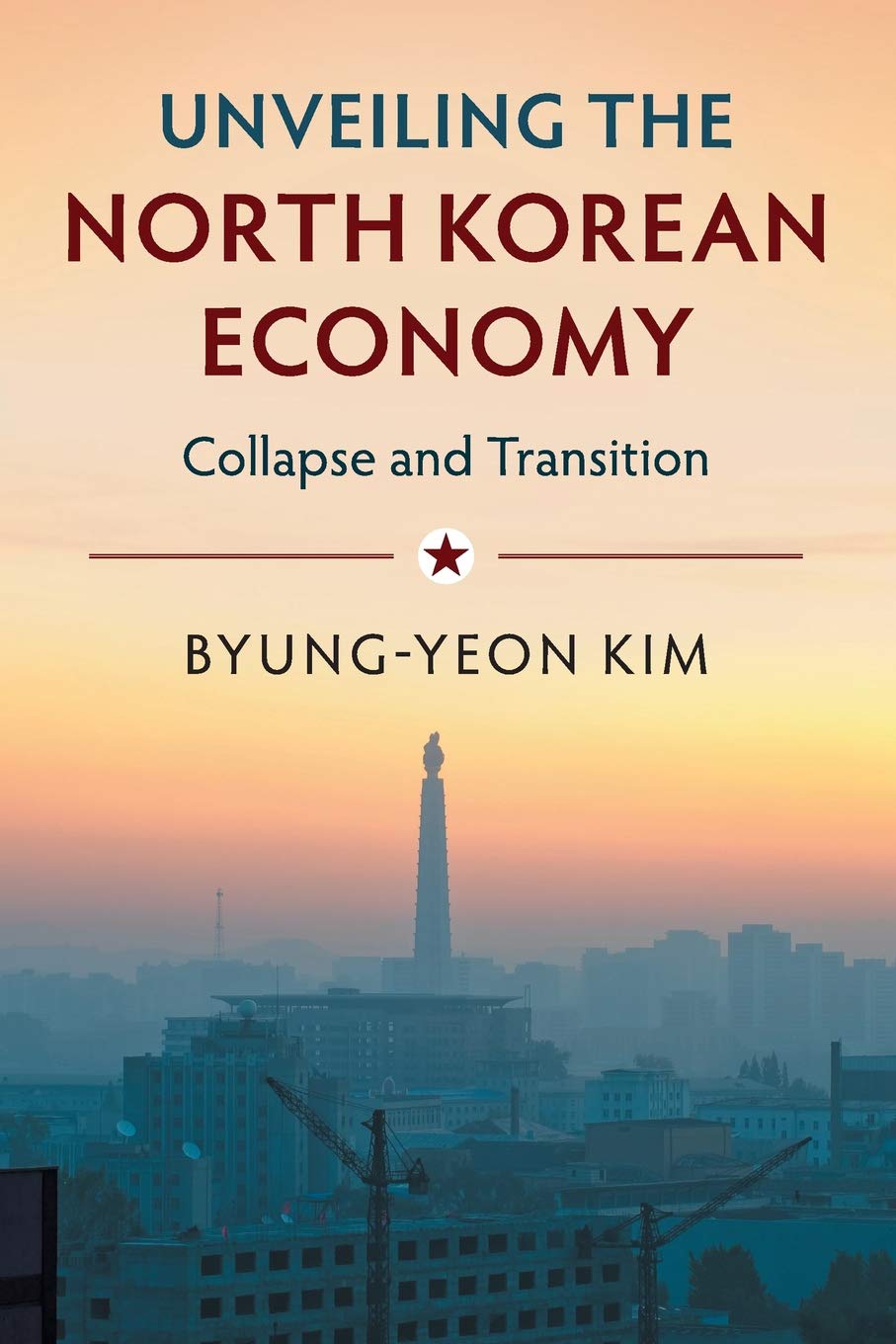Book review: “Unveiling the North Korean economy”
Book review of "Unveiling the North Korean economy", written by Kim Byung-yeon and published by Cambridge University Press in 2016.B. Tauris in 2017.
NICOLAS LEVI
Instytut Boyma 02.07.2019

The author is Kim Byung-yeon, a professor of economics at the Department of Economics at Seoul National University. He’s a recognized distinguished researcher in Humanities and social sciences by the National Research Foundation of the Republic of Korea. He’s a regular columnist o Korean issues in leading South Korean newspapers.
The book Unveiling the North Korean economy, written by Kim Byung-yeon was published by Cambridge University Press in 2016.B. Tauris in 2017. Excluding acknowledgements and introduction, conclusion and additional elements, the book consists of a classic structure: three chapters, where the first chapter is an evaluation of the Socialist economy, then a presentation of the North Korean economy, and finally the Transition process of the North Korean economy, demonstrating how the North Korean leadership overpassed the collapse of the Soviet Union. The book is also a synthesis and overview of studies of the North Korean economy since 1953 (starting from page 41). It’s one, but not the only one, scholar book focused on North Korean economic studies, made available in a foreign language. Interestingly similar books related to the North Korean economy were published in communist countries such as for instance the book entitled Współpraca KRLD z krajami socjalistycznymi [The cooperation of the DPRK with Socialist countries] (Warszawa: Państwowe Wydawnictwo Ekonomiczne, 1975) authored by Stefan Kojło Stefan, and the monograph prepared by Stefan Kojło and Anatol Dikij Polska – KRLD: Gospodarka, współpraca [Poland-DPRK: Economy, cooperation], (Państwowe Wydawnictwo Ekonomiczne, Warszawa 1975).
The book is equally divided between the three following chapters. The first chapter is an evaluation of the Socialist Economy (pp. 6-40). Divided in five parts, the section discussed the framework of the Socialist economy from the point of view of companies and households. The whole is explained using theoretical economic models. The second chapter (pp. 41-216) is a kind of economic history of North Korea, underlining its basements such as the Central Planning System, Juseok Funds&Spot Guidance issues. I regret no enlarged information concerning the Public Distribution System. The third chapter is more contemporary as it treats about the transition of the North Korean economy (pp. 217-300) focusing on the stabilization of its economy through liberalization and potential integration with South Korean partners. As a piece of evidence (p. 92), the author stipulates that 90 per cent of total household expenditures are made in these (unformal) markets.
The book deals with several different eras in the history emphasizing in English, elements of the North Korean economy which were rarely discussed by North Korean scholars. For instance, combined North Korean firms, known as Yeonhap Giupso, (p. 123), the News System of Foreign Trade established in 1991 (p. 124), and the Juseok Fund (pp. 130-31). Some of these elements were discussed on the other best-seller related to the North Korean economy written by Hazel Smith Markets and Military Rule.
There are some points which seems to indicate that the research of the author is somehow outdated. For example, many research surveys done by the author (pp. 185). Were done six years before the publication of the book. Also data seems to be slightly old taking in account the publication date (2017). Due to the old data, conclusion related to the relation between markets, bribery, and regime stability in North Korea may weaken over the time (p. 187) as the survey was done in 2009 (Main Bribe-Takers).
On page 164, data related to the trade of North Korea are updated to 2014, p. 169 imports of North Korea are dated till 2012. may provide more outdated examples. The author also consider the province Hamgyung (known as Hamgyungdo) as a whole in spite of its division in Hamgyongdo North (Hamgyungpukdo) and Hamgyungdo South (Hamgyungnamdo), for example on page 96. I would like to clearly indicate that in any case, the contribution of the author to the gathering of data concerning the North Korean economy is fantastic. The author also minimize the results of the North Korean economy in the 70’s, indicating that the North Korean GDP per capita was higher thatn that of South Korea. The author considers that Growth rates were overestimated in the statistics supplied by North Korean authorities (pp. 80-81).
Concerning bribes and corruption, the author indicates that bribery may have a negative, but also a positive impact. According to Frossman quoted on page 181, as “good corruption may contribute to the stability of the regime because it adds to the aggregate supply of goods and services, while bad corruption does not. Finally, the author defends, what I agree with him, that “the current situation regarding the informal economy and bribery may be characterized as an equilibrium…Given resource constraints that make it difficult for the dictator to pay his officials appropriate salaries, he implicitly allows officials to receive money from market participants.”.
Furthermore, the book has also other limitations. I consider that the author didn’t provided enough data concerning the emergence of a new social class in North Korea: the donjus. These “money owners” are barely mentioned page 64 as being “private financiers…to be financing the construction of flats”. As it wasn’t probably the purpose of the author, this social class was barely mentioned in spite of its key role in the development of the North Korean economy. The author used also few western publications (only one publication or Marcus Noland was quoted – p. 319) and no Russian sources in spite of the connections of this country to North Korea. Probably for linguistic reasons, sources in Chinese were also omitted. It would have maybe valuable to indicate it in the introduction of this monograph.
Kim Byung-Yeon. Unveiling the North Korean economy, Cambridge: Cambridge University Press, 2017, 329 pages. ISBN: 978-1-316-63516-2
Share this:
Click to share on Facebook (Opens in new window)
Click to share on LinkedIn (Opens in new window)
Click to share on Twitter (Opens in new window)

Nicolas Levi Analyst on North and South Korea. He is an assistant professor at the Institute of Mediterranean and Oriental Cultures of the Polish Academy of Sciences. Author of 7 books, more than 20 academic articles, and over 50 analytical reports on the Korean Peninsula, Poland, and related issues. He conducts lectures at top universities in Poland and abroad.

No comments:
Post a Comment